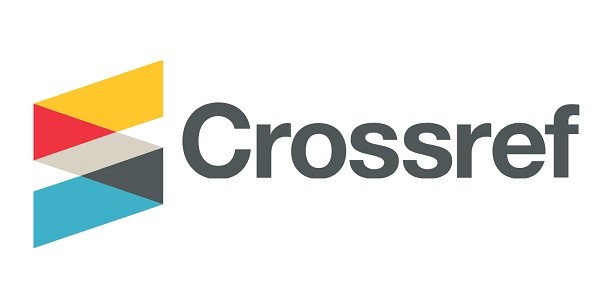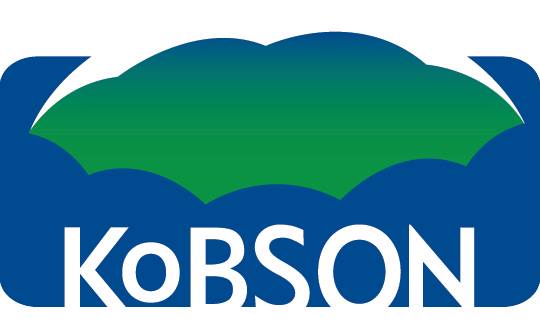DOI: 10.5937/jaes0-30915
This is an open access article distributed under the CC BY 4.0

Volume 19 article 831 pages: 586-591
This paper presents the results of fatigue tests of titanium alloy, and also describes the use of the hypothesis of linear damage summation when processing the results of fatigue tests. Based on the experiments, the endurance limit of the titanium alloy was determined, which lies in the range from 460 to 480 MPa with the number of cycles from 105 to 108. The purpose of the experiment was to determine the endurance limit of high-strength material, as well as a mathematical measurement of the expected destruction. In this study, empirical methods were used such as indirect observation of the object under study, description, and measurement of technical influences exerted on it by an artificial means, as well as linear regression analysis to establish the relationship between stress and durability. As a result of the experiment, fatigue curves were obtained for various probabilities, which give grounds to conclude that the use of the linear damage summation hypothesis in processing the results of fatigue tests entails a satisfactory practical accuracy of the calculation of endurance limit. This experiment is aimed at improving metal production by studying the quality of titanium alloy test pieces and performing mathematical analysis of possible problems arising in the process of its operational testing.
This study is conducted with financial support from the Ministry of Education and Science of the Russian Federation (project No. FZRR-2020-0023/code 0699-2020-0023).
1. Hering, O., Tekkaya, A.E. (2020). Damage-induced performance variations of cold forged parts. Journal of Materials Processing Technology, vol. 279, article number 116556. DOI: 10.1016/j.jmatprotec.2019.116556
2. Sunder, R. (2016). Why and how residual stress affects metal fatigue. Springer Proceeding in Physics, vol. 175, 489-504. DOI: 10.1007/978-3-319-26324-3_34
3. Paul, S.K. (2020). Correlation between endurance limit and cyclic yield stress determined from low cycle fatigue test. Materialia, vol. 11, article number 100695. DOI: 10.1016/j.mtla.2020.100695
4. Li, P., Warner, D.H., Fatemi, A., Phan, N. (2016). Critical assessment of the fatigue performance of additively manufactured Ti-6AL-4V and perspective for future research. International Journal of Fatigue, vol. 85, 130-143. DOI: 10.1016/j.ijfatigue.2015.12.003
5. Zhu, S.P., Yue, P., Yu, Z.Y., Wang, Q. (2017). A combined high and low cycle fatigue model for life prediction of turbine blades. Materials, vol. 10, 80-98. DOI: 10.3390/ma10070698
6. Gates, N.R., Fatemi, A. (2017). On the consideration of normal and shear stress interaction in multiaxial fatigue damage analysis. International Journal of Fatigue, vol. 100, 322-336. DOI: 10.1016/j.ijfatigue.2017.03.042
7. Yoshinaka, F., Nakamura, T., Takeuchi, A., Uesugi, M., Uesugi, K. (2019). Initiation and growth behaviour of small internal fatigue cracks in Ti-6Al-4V via synchrotron radiation microcomputed tomography. Fatigue and Fracture of Engineering Materials and Structures, vol. 42, no. 9, 2093-2105. DOI: 10.1111/ffe.13085
8. He, Y., Xiao, G., Li, W., Huang, Y. (2018). Residual stress of a titanium alloy after belt grinding and its impact on the fatigue life. Materials, vol. 11, 155-189. DOI: 10.3390/ma11112218
9. Shojaei, A.K., Volgers, P. (2017). Fatigue damage assessment of unfilled polymers including self-heating effects. International Journal of Fatigue, vol. 100, 367-376. DOI: 10.1016/j.ijfatigue.2017.03.017
10. Mughrabi, H. (2015). Microstructural mechanisms of cyclic deformation, fatigue crack initiation and early crack growth. Philosophical Transactions of the Royal Society A: Mathematical, Physical and Engineering Sciences, vol. 373, 1-21. DOI: 10.1098/rsta.2014.0132
11. Pineau, A., McDowell, D.L., Busso, E.P., Antolovich, S.D. (2016). Failure of metals II: Fatigue. Acta Materialia, vol. 107, 484-507. DOI: 10.1016/j.actamat.2015.05.050
12. Yang, K., Zhong, B., Huang, Q., He, C. (2018). Stress ratio effect on notched fatigue behavior of a Ti-8Al-1Mo-1V alloy in the very high cycle fatigue regime. International Journal of Fatigue, vol. 116, 80-89. DOI: 10.1016/j.ijfatigue.2018.05.032
13. Stanzl-Tschegg, S. (2014). Very high cycle fatigue measuring techniques. International Journal of Fatigue, vol. 60, 2-17. DOI: 10.1016/j.ijfatigue.2012.11.016
14. Antolovich, S.D., Armstrong, R.W. (2014). Plastic strain localization in metals: Origins and consequences. Progress in Materials Science, vol. 59, 1-160. DOI: 10.1016/j.pmatsci.2013.06
15. Maurel, P., Weiss, L., Grosdidier, T., Bocher, P. (2020). How does surface integrity of nanostructured surfaces induced by severe plastic deformation influence fatigue behaviors of Al alloys with enhanced precipitation? International Journal of Fatigue, vol. 140, article number 105792. DOI: 10.1016/j.ijfatigue.2020.105792
16. Debroy, T., Wei, H.L., Zuback, J.S., Elmer, J.W., Beese, A.M., Zhang, W. (2018). Additive manufacturing of metallic components – Process, structure and properties. Progress in Materials Science, vol. 92, 112-224. DOI: 10.1016/j.pmatsci.2017.10.001
17. Kumar, S., Chattopadhyay, K., Singh, V. (2017). Effect of ultrasonic shot peening on LCF behavior of the Ti-6Al-4V alloy. Journal of Alloys and Compounds, vol. 724, 187-197. DOI: 10.1016/j.jallcom.2017.07.014
18. Ding, D., Pan, Z., Cuiuri, D., Li, H. (2015). Wire-feed additive manufacturing of metal components: technologies, developments and future interests. International Journal of Advanced Manufacturing Technology, vol. 81, no. 1-4, 465-481. DOI: 10.1007/s00170-015-7077-3
19. Liu, C., Liu, D., Zhang, X., Ma, A., Ao, N., Xu, X. (2019). Improving fatigue performance of Ti-6Al-4V alloy via ultrasonic surface rolling process. Journal of Materials Science and Technology, vol. 35, 1555-1562. DOI: 10.1016/j.jmst.2019.03.036
20. Su, B., Zhang, Y., Sun, G., Ni, Z. (2018). Prediction of micro indention depth of titanium alloy during laser shock processing. Japanese Journal of Applied Physics, vol. 57, 122-137. DOI: 10.7567/JJAP. 57.122703
21. Xiao, H., Fan, X.G., Zhan, M., Liu, B.C., Zhang, Z.Q. (2021). Flow stress correction for hot compression of titanium alloys considering temperature gradient induced heterogeneous deformation. Journal of Materials Processing Technology, vol. 288, article number 116868. DOI: 10.1016/j.jmatprotec.2020.116868







